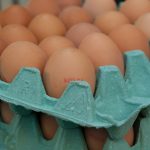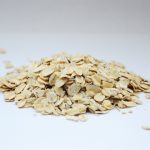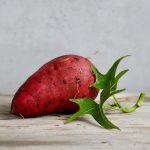As more and more people learn to chose whole foods, real food, to feed their family the market share for processed foods is dropping. Groceries are a necessary part of living, we all need to eat. But there are no guarantees about how well we eat. Given that their mission is not to sell food but to make a profit, many food manufacturers are looking to reverse the decline in profits. Their primary tactic is to go after lower socio-economic consumers. Unfortunately these are the ones who have the tightest budgets for food and who may not stop to consider nutritional value per dollar spent.
The cost of groceries
To tempt consumers to by their highly processed foods producers use the following tactics:
- available at lower cost grocery stores
- available at discount stores (such as The Dollar Store)
- offer multiple purchase coupons
- offer smaller packages at what appears to be a low price
- offer single serving size options
- create discount menu pricing (at fast food locations)
Unfortunately those options not only offer incentive to purchase junky foods, they are also more expensive when you price out the actual cost per weight or volume. Sadly it's a recipe for a health disaster.
Yes, that burger may only be a dollar, same with those fries. But it's nutritionally deficient food which is high in calories, fats, and chemicals. It may fill you up but it won't nourish you. That cereal package may seem like a deal but there's no real nutrition in the package and it often comes with a lot of sugar. Your belly may be full but your body is depleted.
Eating healthy for less
It is possible to eat healthy for less, it simply means making different choices. A recent trip to the grocery store* highlighted a few foods which are healthy and available for $1 or less per serving.
 Apples: Nature's perfect 100 calorie snack pack, the average apple contains about 100 calories. They are a good source of fiber, including pectin (a type of fiber that may be good for reducing cholesterol). Apples also provide vitamin C and healthy phytonutrients which can help moderate blood sugar. At $1.15 per pound with three medium apples in a pound it comes to just under three apples for a dollar. This was the price for organic apples which represent the best choice as there are no pesticides on them. Obviously conventional apples are less expensive but come with a chemical coating.
Apples: Nature's perfect 100 calorie snack pack, the average apple contains about 100 calories. They are a good source of fiber, including pectin (a type of fiber that may be good for reducing cholesterol). Apples also provide vitamin C and healthy phytonutrients which can help moderate blood sugar. At $1.15 per pound with three medium apples in a pound it comes to just under three apples for a dollar. This was the price for organic apples which represent the best choice as there are no pesticides on them. Obviously conventional apples are less expensive but come with a chemical coating.
 Beans: Lentils, chickpeas, black beans, are all good nutritional choices for fiber, folate, iron, and protein. Their high levels of fiber make them an excellent choice for helping to reduce cholesterol and manage blood sugar. $0.79 per pound for lentils means 12 servings per pound, all for less than a buck.
Beans: Lentils, chickpeas, black beans, are all good nutritional choices for fiber, folate, iron, and protein. Their high levels of fiber make them an excellent choice for helping to reduce cholesterol and manage blood sugar. $0.79 per pound for lentils means 12 servings per pound, all for less than a buck.
 Broccoli: Contains calcium, vitamin A, vitamin C, potassium, folate and fiber. Low in calories it's delicious raw, steamed, or stir-fried. One bunch will set you back $0.99 for around three 1⁄2 C. servings.
Broccoli: Contains calcium, vitamin A, vitamin C, potassium, folate and fiber. Low in calories it's delicious raw, steamed, or stir-fried. One bunch will set you back $0.99 for around three 1⁄2 C. servings.
Collard Greens: This dark, leafy green and others such as kale, spinach, or mustard greens are loaded with vitamin C, carotenoids, and calcium. This week at my grocery store organic collards were $0.99 per bunch with one bunch providing 2-3 servings cooked. It's delicious when cooked with onions and fresh herbs.
 Eggs: A great source of protein, lutein, and zeaxanthin (good for eye health) as well as selenium, B2, B5 and B12 eggs are a nutrition powerhouse. They are versatile, easy to prepare and can be served for any meal. At $2.39 per dozen for large, cage free, grain fed eggs that's 5 eggs, and five servings, for $1.00.
Eggs: A great source of protein, lutein, and zeaxanthin (good for eye health) as well as selenium, B2, B5 and B12 eggs are a nutrition powerhouse. They are versatile, easy to prepare and can be served for any meal. At $2.39 per dozen for large, cage free, grain fed eggs that's 5 eggs, and five servings, for $1.00.
 Oats (old fashioned rolled): high in fiber and a good source of manganese, selenium, vitamin B1, magnesium; a 1⁄2 C. serving even provides 6 g. of protein, they are also scientifically proven to reduce cholesterol (whole oats are best). $0.15 per ounce means that whole oats come out to 6 1⁄2 ounces for $1.00 or a little over 4 servings. note: for those who need to eat gluten free the cost for oats would be different.
Oats (old fashioned rolled): high in fiber and a good source of manganese, selenium, vitamin B1, magnesium; a 1⁄2 C. serving even provides 6 g. of protein, they are also scientifically proven to reduce cholesterol (whole oats are best). $0.15 per ounce means that whole oats come out to 6 1⁄2 ounces for $1.00 or a little over 4 servings. note: for those who need to eat gluten free the cost for oats would be different.
Sweet Potatoes: An excellent source of beta carotene, vitamin C and provide a  moderate amount of fiber. A 5” long sweet potato weighs about 4.5 ounces, for $0.89 that's a little more than one serving (3.5 ounces per serving) for less than a buck.
moderate amount of fiber. A 5” long sweet potato weighs about 4.5 ounces, for $0.89 that's a little more than one serving (3.5 ounces per serving) for less than a buck.
Admittedly it takes a little more effort to eat for less when you include time for shopping and cooking. But if you're willing to focus on health and spend the time, it is possible to get a lot of nutrition for just a dollar.
*These prices reflect a trip to my grocery store in my local area in Texas. Prices may differ depending on location.


